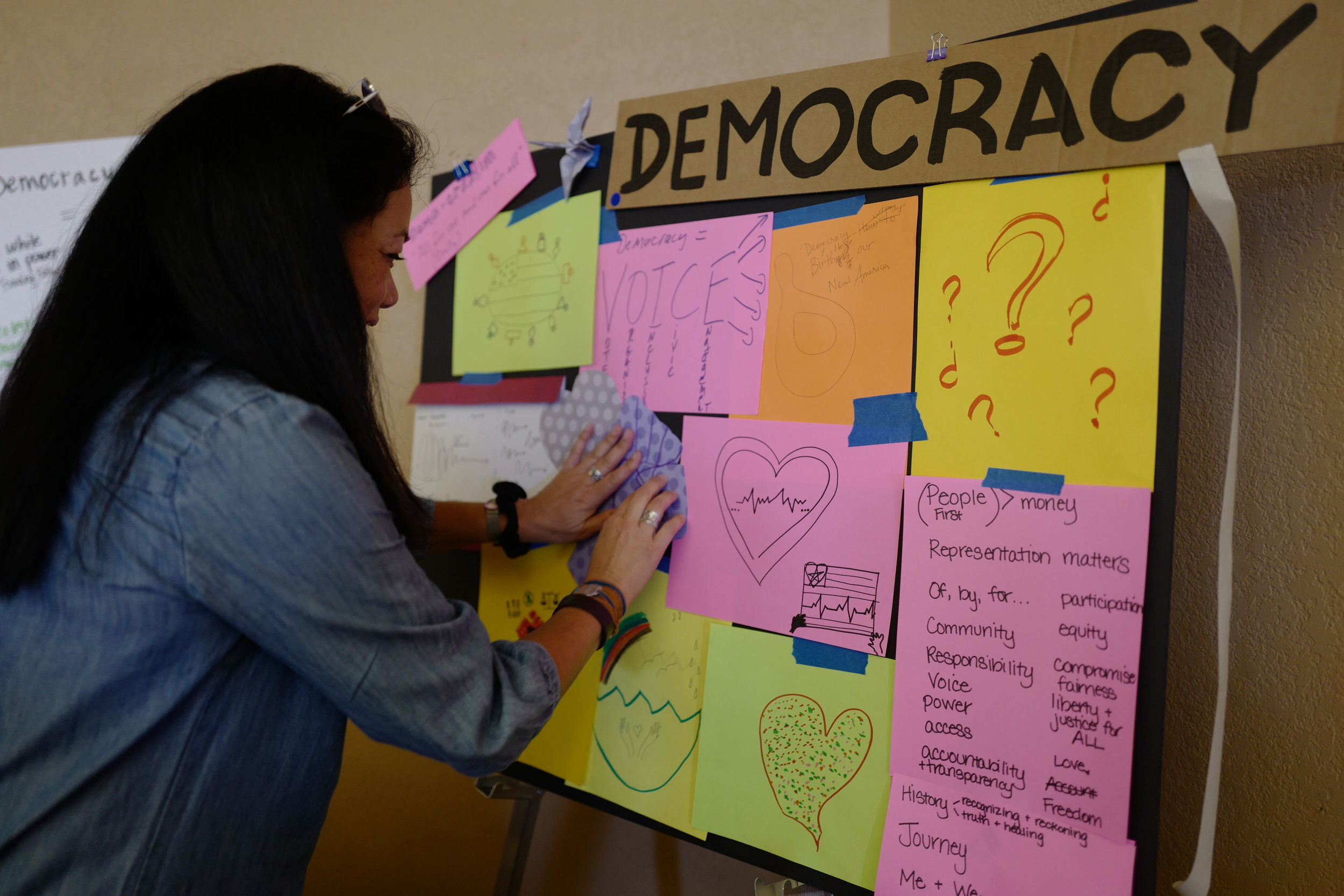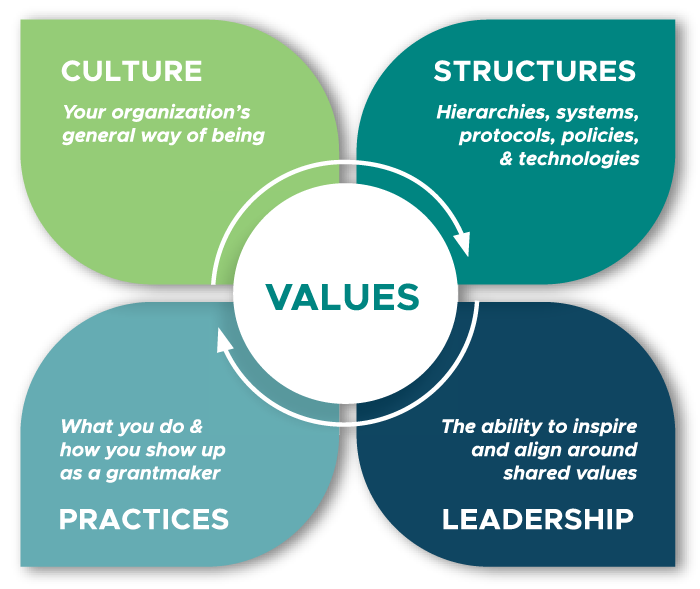
Trust-Based Culture
A foundation’s ability to implement trust-based grantmaking practices is directly tied to its ability to build and maintain an internal organizational culture rooted in trust.
The 4 Dimensions of TBP: Practices, Culture, Structure, and Leadership
Trust-based philanthropy is a holistic approach that has implications for a grantmaking institution's practices, culture, structures, and leadership. Learn more.
Ultimately, a trust-based culture is one wherein we center relationship-building and address inequitable power dynamics in every aspect of our work. This requires us to uncover biases and make space for dialogue, collaboration, transparency, and humility. This also means we must work intentionally and continuously to foster a sense of trust among trustees, senior leadership, staff, grantees, and community members.
Culture requires constant cultivation. In a trust-based context, culture is strongest when everyone feels a sense of agency in shaping it. The role of leadership is essential in upholding and reinforcing a culture of trust.
Steps you can take:
Assess your current culture. What are the assumptions about your work and approach? Does everyone have a sense of agency? What source materials support your thinking? What are the expectations of staff? Are there regular discussions about values? Are gatherings designed with power-sharing and inclusion? Identify any cultural practices that may be misaligned with trust-based values.
Normalize conversations about power and race. Power imbalances are always present. Be sure to discuss how they intersect with race, age, gender identity, sexual orientation, (dis)ability, and immigration status. Be upfront about your organization’s endowment, acknowledge the power imbalances within your staff structure, and name built-in biases in your mission statement. It’s important that staff feel empowered to raise and address these imbalances.
Support continuous learning. A learning mindset helps foster a sense of humility, growth, and dialogue. Encourage training opportunities for staff and host discussion groups about current events. Build in annual feedback from the community or conduct an ongoing assessment of your organization’s community engagement and trust-building efforts.
Create space for reflection and dialogue. Foster a reflective culture by reserving part of team meetings for relationship-building, encouraging and honoring paid time off, and hosting restorative circles to repair challenged relationships.
ORGANIZATIONAL CULTURE & RACE
The default culture in many institutions is white dominant. In this context, individualism, achievement, and perfection operate as baseline assumptions, with little acknowledgment of the structural inequities and sociocultural differences that are present for many people in the workforce. If this default culture goes unacknowledged, it can alienate those who are unable to assimilate, serve as a barrier to building internal trust, and perpetuate staff turnover. For this reason, a trust-based culture requires a commitment to antiracist and anti-bias work so that we can optimize opportunities for cooperation, community, and creativity among diverse staff with varying lived experiences.


